Malitpoos are the result of mixing a poodle (usually a toy poodle) and a Maltese, known as the first generation. Therefore, maltipoos can inherit their coat colors from both the Maltese and poodle. These adorable hybrids have soared in popularity, so many more breeders are focusing on the Maltipoo, resulting in second and third-generation dogs. As a result, their coat color is becoming more standardized. However, the AKC (American Kennel Club) does not recognize this breed, as they only register purebreds. While the Maltese are predominantly white, Poodles come in several colors, meaning these genes can be passed on to Malitpoos. Below is a list of Maltipoo colors from rarest to most common.
Maltipoo Colors
- Black
- Red
- Sable
- Silver beige
- Blue
- Cafe Au lait
- Brown
- Bronze
- Gray
- Silver
- Apricot
- Cream
- White
1. Black
The rarest Malitpoo color is solid black. This means the coat cannot contain any other color (parti or sable). However, if the fur has just a touch of color, it’s called black with a mis-mark. Darker Malitpoos usually have silver tinting or are black parti (two colors).
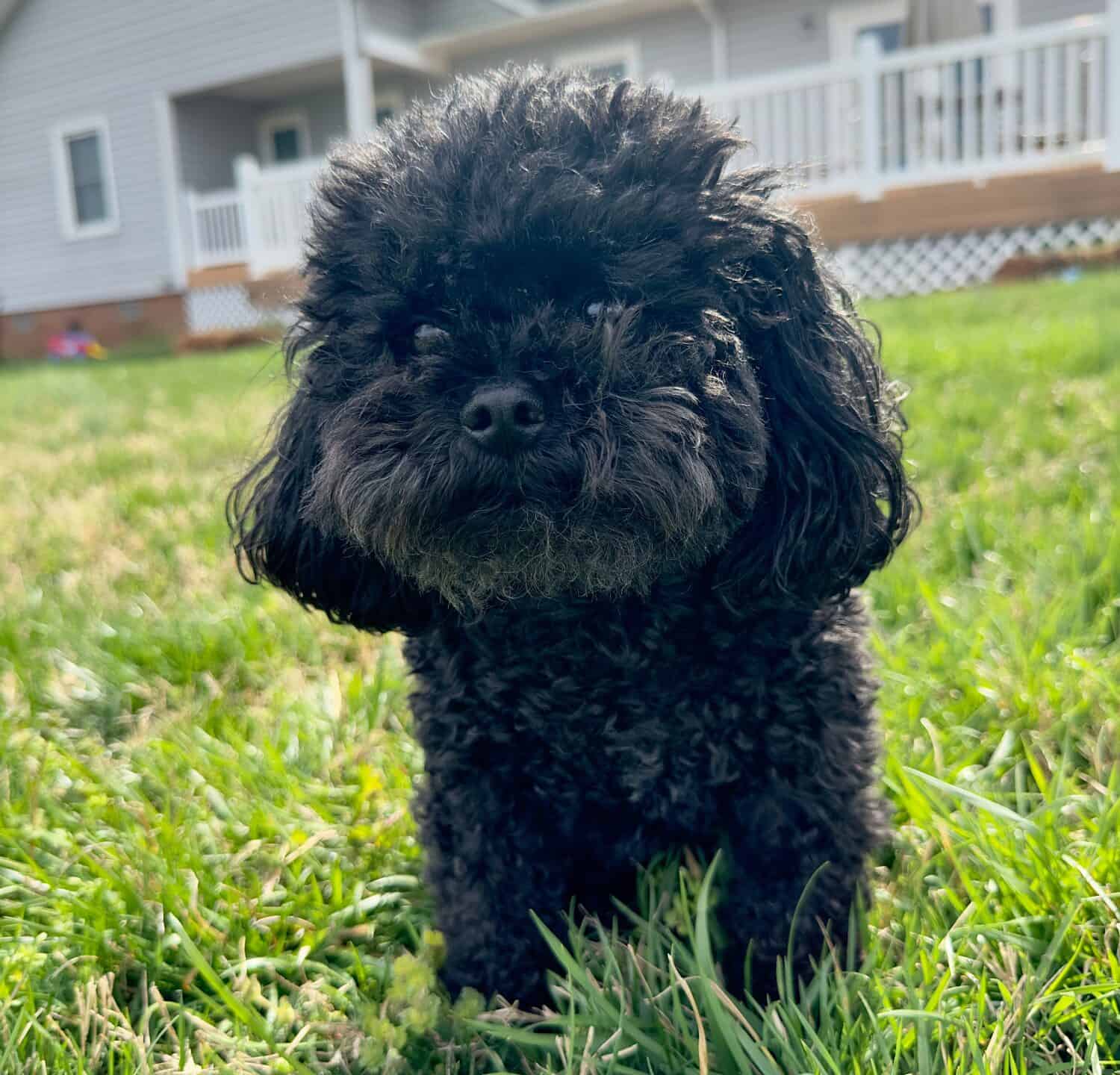
The rarest Malitpoo color is solid black.
Image: Bryandavis1989, Shutterstock
©Bryandavis1989/Shutterstock.com
2. Red
Besides black, red is the hardest Maltipoo color to achieve and is seen even less than brown variations. The red coloring in poodles is also very rare, which is why it was only registered with AKC in the 1980s.

Besides black, red is the hardest Maltipoo color to achieve and is seen even less than brown variations.
Image: olgaarmawir, Shutterstock
©olgaarmawir/Shutterstock.com
3. Sable
Technically, sable is not a color. Instead, it is dark-tipped hairs on a dog’s coat, making it appear darker in color. Tips range from gray, chocolate brown, and black, but if you push back the hair, there is a lighter color close to the roots, usually cream, white, or tan.
Interestingly, sable is not a registered color in Maltese or poodles, but it does exist in the latter. Therefore, it exists in Malitpoos. However, it is extremely rare. Furthermore, it is possible for the sable color to disappear as the dog gets older. This is a result of grooming. For example, when trimming the coat, you cut away the dark tips. Most hairs do not grow back with the dark tips. Due to this change, sable puppies look significantly different from adults.

Technically, sable is not a color. Instead, it is dark-tipped hairs on a dog’s coat, making it appear darker in color.
Image: Elena Bennett, Shutterstock
©Elena Bennett/Shutterstock.com
4. Silver Beige
Malitpoos with a silver beige coat are extremely rare. Their coloring is a dilute brown. However, when born, the puppies look brown and change color around six to seven weeks. The puppies’ coats will start to lighten around the paws and face. However, it is not until two years of age that their coats fully change to a shiny, light brown hue. Unlike other brown variations, silver-beige Maltippos have black pigmentation on their paw pads, noses, and around their eyes.
5. Blue
Maltipoos also come in blue, which many mistake for black. However, it is a diluted shade of black. Interestingly, the blue coat is a result of the dog’s skin, not the color of the hair. For example, if your Malitpoo has blue skin around its eyes and on its paw pads, it is blue, not black. It is easier to see their pigmentation in direct sunlight. Furthermore, it is hard to tell if a Malitpoo is blue at birth because they are born black, and their color starts to fade when they reach one to two years old.

Maltipoos also come in blue, which many mistake for black. However, it is a diluted shade of black.
Image: Bokehboo Studios, Shutterstock
©Bokehboo Studios/Shutterstock.com
6. Cafe Au Lait
The café au lait coloring is very rare in both poodles and Maltipoos. Again, this coat color is caused by the skin, not the fur. For example, the skin is a sliver beige color, making the hair a light, shiny tan. These Maltipoos have dark almond eyes and liver-colored noses.
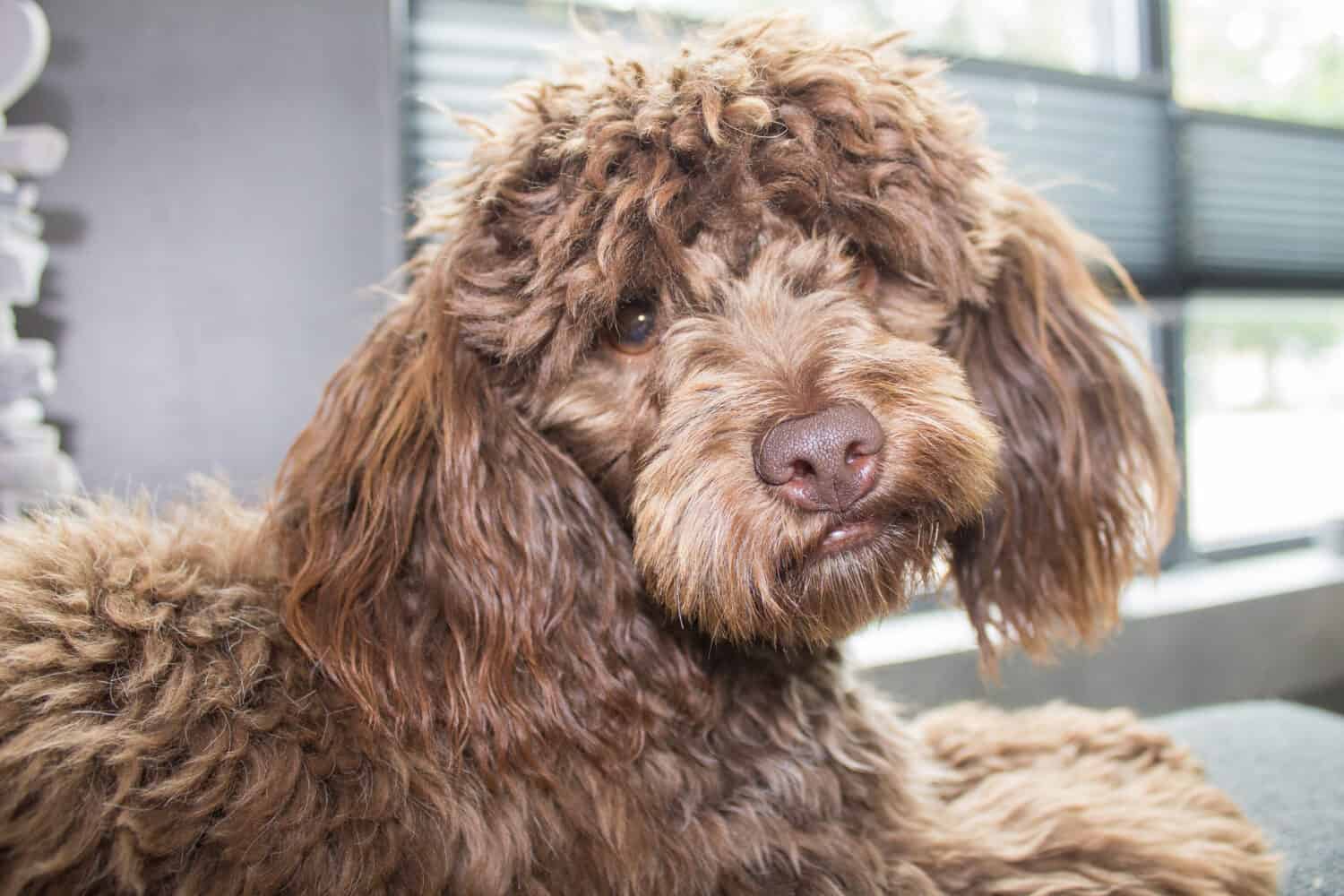
The café au lait coloring is very rare in both poodles and Maltipoos.
Image: MrKawa, Shutterstock
©MrKawa/Shutterstock.com
7. Brown
The brown Malitpoo is often confused with the golden, bronze, or tan varieties, but their coloring is much deeper and darker. Some compare it to melted milk chocolate color. This hue is due to a gene past down for poodles. Brown Maltipoos have no black pigments, which include the skin around their eyes and noses, which are brown.
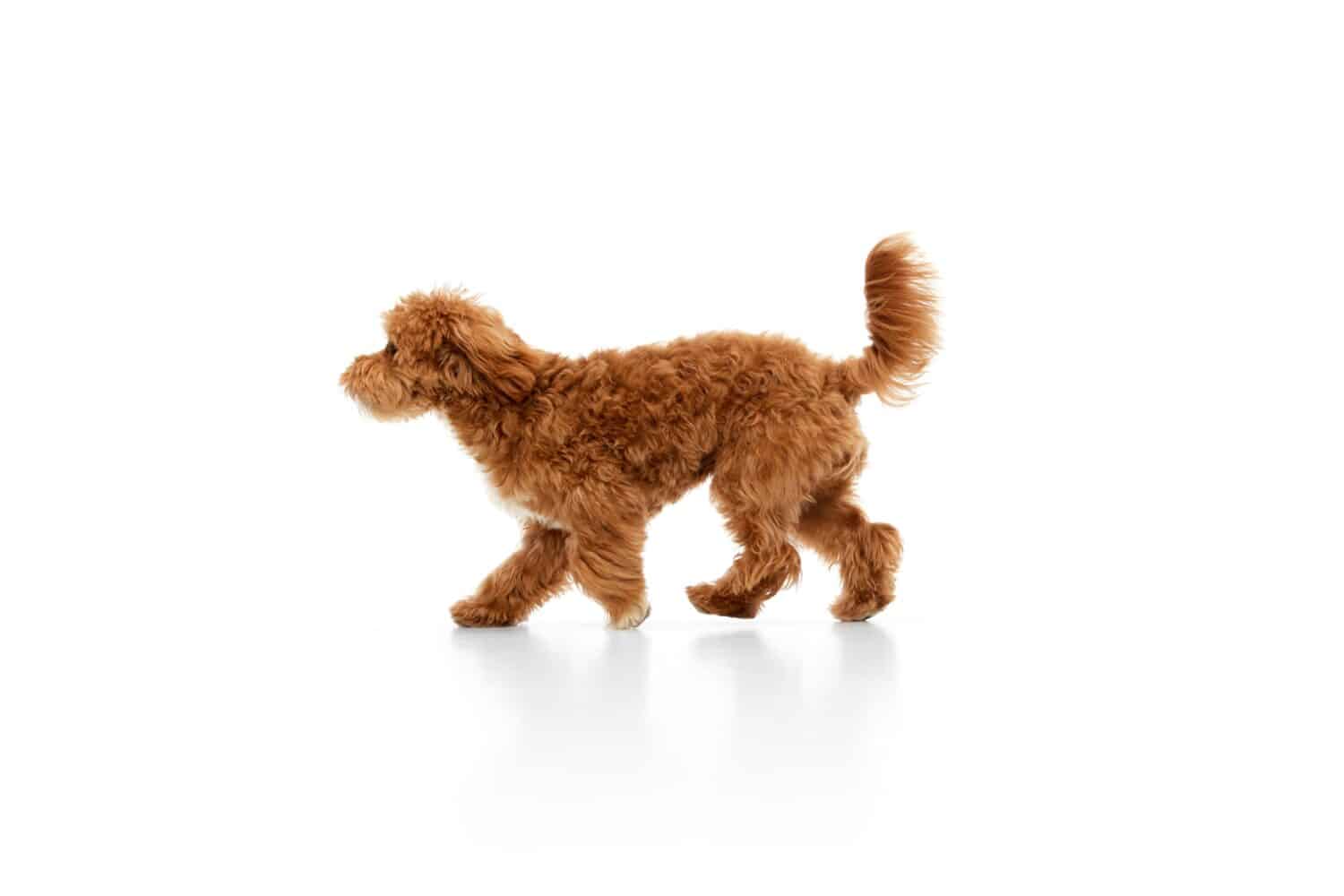
The brown Malitpoo is often confused with the golden, bronze, or tan varieties, but their coloring is much deeper and darker.
Image: Anton Vierietin, Shutterstock
©Anton Vierietin/Shutterstock.com
8. Bronze
The bronze coloring is becoming a standard color in Maltipoos, even though there isn’t technically a standard for this breed. As with most hybrids, new colors start popping up as soon as there’s a demand for them, and that’s how bronze Maltipoos originated. Their coats are a light, shiny tan color.

Bronze Maltipoos have a light, shiny tan coat.
Image: voronaman, Shutterstock
©voronaman/Shutterstock.com
9. Silver
Many find it challenging to differentiate between a silver and gray Maltipoo, but there are significant differences. Firstly, silver Malitpoos are born dark, and their coat grows lighter as they age, becoming a shiny silver color. So, in essence, it’s a diluted gray. For example, when looking at a gray and silver Maltipoo side-by-side, the silver pup is lighter, with more shine.
10. Gray
There are two types of gray Malitpoos. One type is born gray and stays that way for their entire lives, and the other type is parti-black Malitpoos that go gray between the ages of four and five.

Gray Maltipoos are not that uncommon. There are two types, one is born gray, and the other turns gray with age.
Image: Bokehboo Studios, Shutterstock
©Bokehboo Studios/Shutterstock.com
11. Apricot
There is a fine line between apricot and red. In fact, apricot is a recessive gene that dominates red. Some of the apricot Maltipoos are so light it looks like they have cream coats. However, you can always tell they are apricot due to the red tint in their fur. But, if a solid apricot Maltipoo has a secondary color that is darker and deeper than the tone of the apricot, it is considered a red.
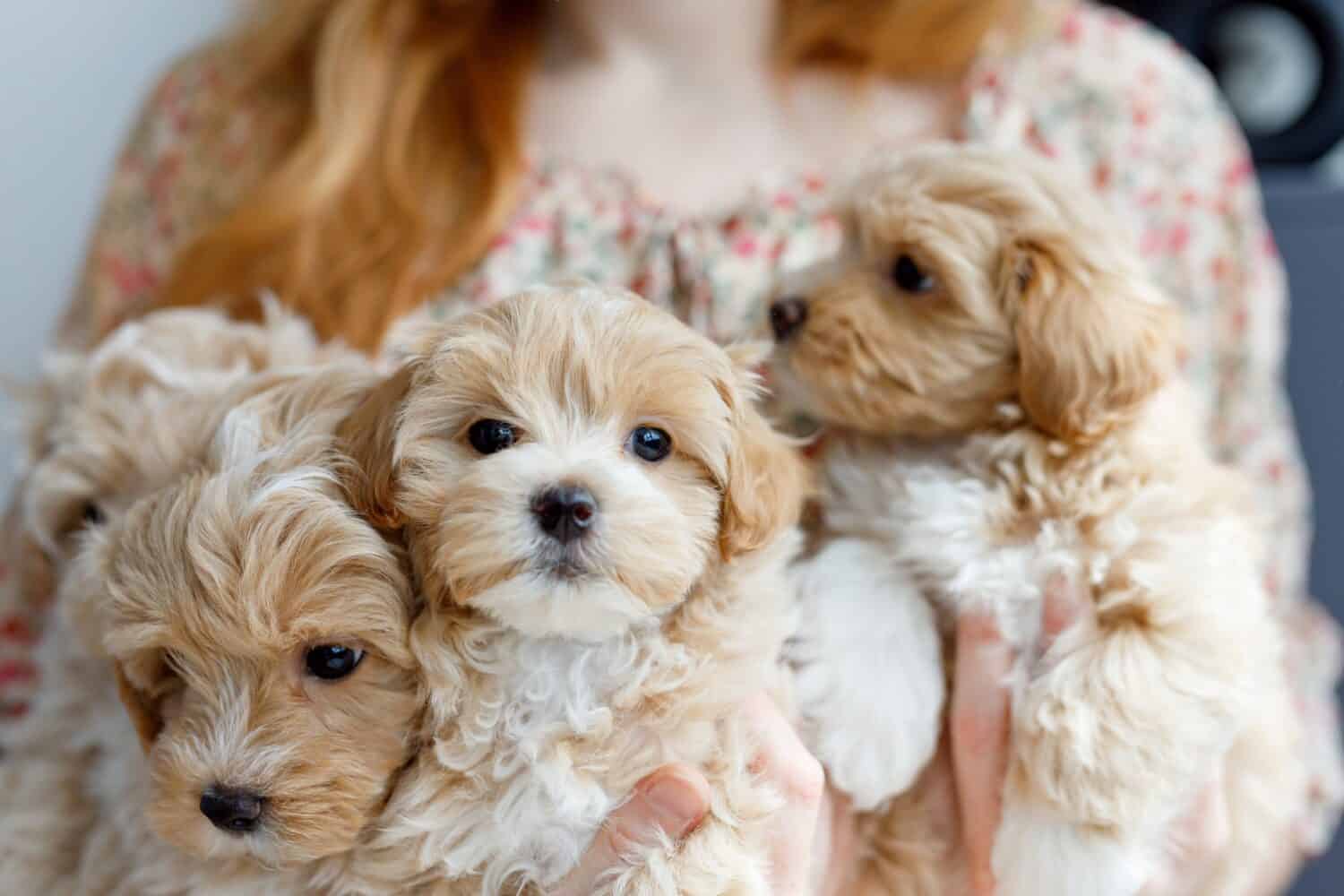
Some of the apricot Maltipoos are so light it looks like they have cream coats.
Image: KDdesignphoto, Shutterstock
©KDdesignphoto/Shutterstock.com
12. Cream
One of the more common Maltipoo colors is cream. These dogs may appear white in color, but there is a clear difference between the two when you see them side-by-side. However, there are various shades of cream, and some are more distinctive than others. Furthermore, some cream Maltipoos have darker coloring on certain areas of their bodies, like gray, apricot, or tan.
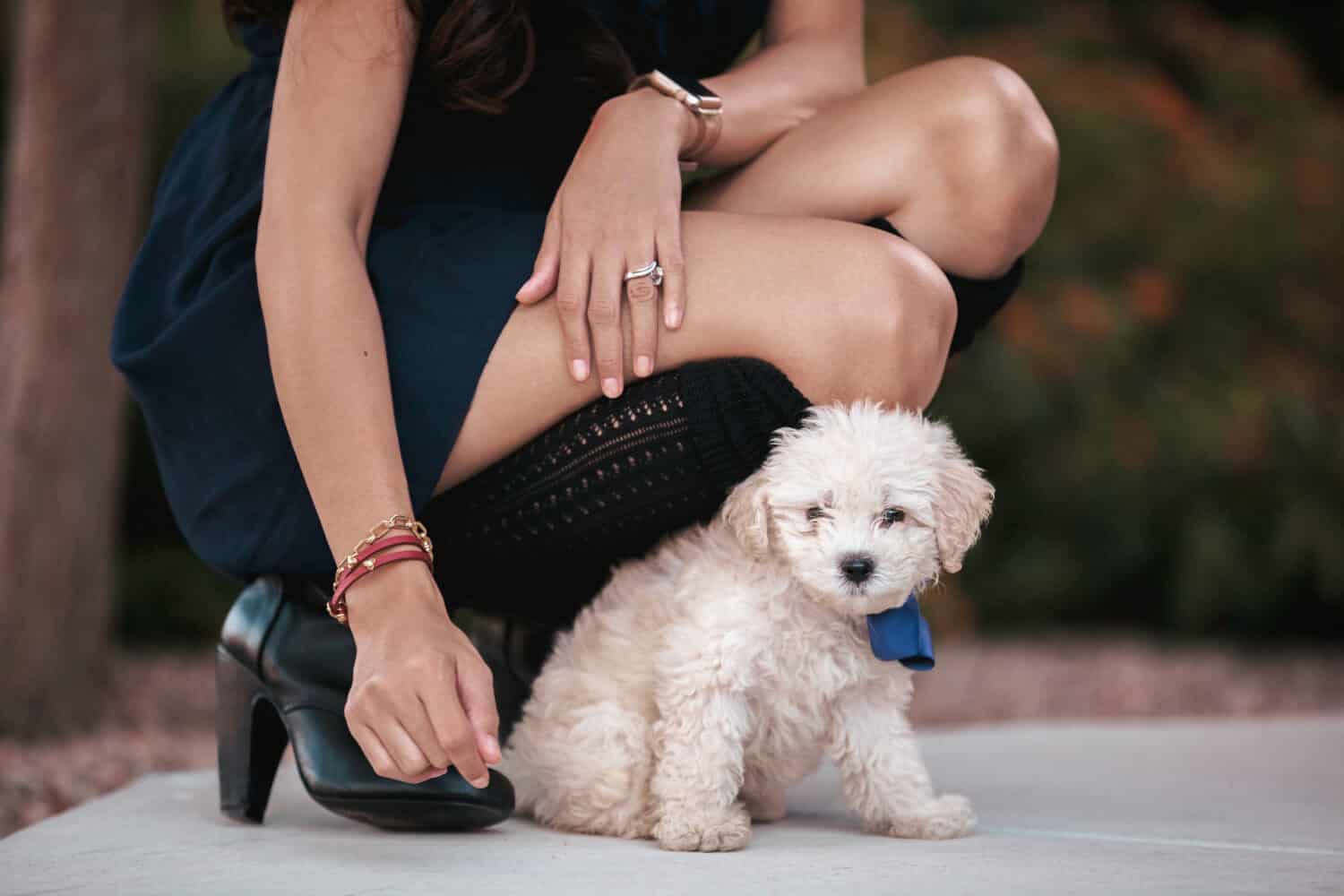
There are various shades of cream, and some are more distinctive than others.
Image: Sean Moorefield, Shutterstock
©Sean Moorefield/Shutterstock.com
13. White
The most common Maltipoo color is white, which is the Maltese’s primary color and a common color in poodles. Additionally, white is the most sought-after color, with people looking for Maltipoos. Keeping these little mischieve makers clean is another story, but they sure are cute!
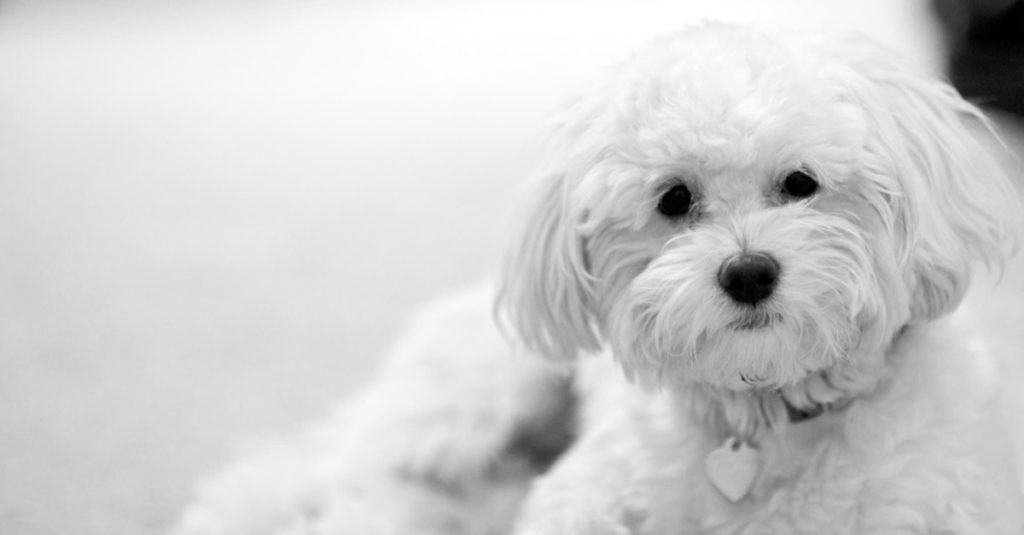
The most common Maltipoo color is white, which is the Maltese’s primary color and a common color in poodles.
©Tyler Miller/Shutterstock.com
Maltipoo Colors Change as They Age
Determining the color of a Maltipoo can be challenging because many factors affect the coloring of pups with solid coats. Many Malitpoos hold their colors until they reach maturity at around one to two years old. This is when they “clear,” meaning their fur begins to lighten. However, sometimes only certain areas lighten. For example, the coloring on their ears and areas where their fur is thickest tend to hold their color.
The photo featured at the top of this post is © OlgaOvcharenko/Shutterstock.com
Ready to discover the top 10 cutest dog breeds in the entire world?
How about the fastest dogs, the largest dogs and those that are -- quite frankly -- just the kindest dogs on the planet? Each day, AZ Animals sends out lists just like this to our thousands of email subscribers. And the best part? It's FREE. Join today by entering your email below.
Thank you for reading! Have some feedback for us? Contact the AZ Animals editorial team.






